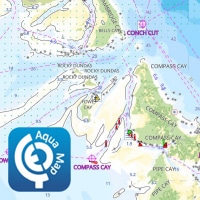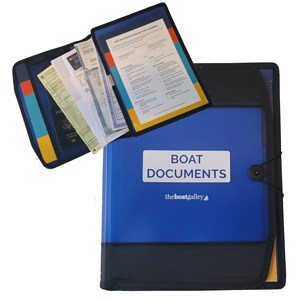Which is better: a catamaran or monohull? Having had one of each, I have found advantages and disadvantages to both. Here’s a summary:
Living On Board
Living Space: Hands down, catamarans are the winner when comparing boats of the same length. Our 34’ cat has more living space than our 37’ mono did. Cats also tend to be lighter inside, but this is somewhat a function of individual designs.
Storage Space: This depends more on the individual boat, but overall it seems that monos tend to have more storage built in, and cat owners often turn one cabin into storage to create their own.
Load Carrying: No boat likes to be overloaded, but cats are generally more weight sensitive than monohulls.
Underway
Speed: Cats are faster.
Draft: Cats tend to be shallower draft, although centerboard or retractable keel monohulls certainly exist.
Close-Windedness: Cruising boats generally don’t sail all that close to the wind, period, and do even worse when loaded down. Hull configuration and placement of jib tracks play an important role, as do the actual sails and skill of the skipper. All that said, monohulls will generally sail somewhat closer to the wind.
Maneuverability: With twin engines, cats might be a little more dexterous although this is offset to a certain degree by their wider beam and windage. In monohulls, fin keels are easiest to maneuver, true full keels the hardest particularly when backing.
Cockpits: Cats win when it comes to entertaining space but monos are generally more protective when sailing in snotty weather.
Boarding: Cats almost always have sugar scoops on both hulls, making it very easy to get aboard from a dinghy or when swimming. This also makes it easier to get large dogs, provisions and other supplies aboard from a dinghy. Monohulls with sugar scoops have similar advantages. Monos without sugar scoops are tougher and can be almost impossible for anyone who is mobility-impaired. Both cats and monos can have gatess in the lifelines to make them easier to board at a dock.
Engines: Most cats have two engines, whereas monos have one. Catamarans thus have a “spare” if there is a problem with one, but there is also twice the maintenance.
Saildrive: Cats often have saildrives, which require more maintenance than just a shaft and propeller. However, a saildrive (or drive leg, such as many smaller cats have) translates into less drag when sailing.
Stability: Cats heel very little, both at anchor and underway. Monohulls are more “tippy” in general, will feel wakes from passing boats more, and sail at more of a heel.
Motion: The motion of cats and monos is very different and which is easier is a matter of personal preference. In general, the motion of cats is more jerky as waves hit the two hulls at slightly different times vs. hitting a monohull only once.
Sail handling: The deck on a catamaran is more stable to work from and it is much easier to hoist and retrieve a spinnaker or whisker pole from the large foredeck of a cat than from a monohull.
Noise: Cats tend to be noisier with water slapping at the bridge deck. This can be a problem even at anchor if there are waves.
Righting ability: A monohull that capsizes or pitchpoles will almost certainly right itself. Cats won’t as they are equally-stable upside down.
Regular Costs for Catamaran or Monohull
Marinas: Cats generally need an extra-wide or double-width slip, which come with a surcharge when they exist at all. Many older marinas cannot accommodate cats other a very few at T-heads. One of the features of our small cat is that she’s only 14 feet wide and we’ve even had times where we simply couldn’t find a spot.
Haulouts: Beam can also be a problem when it comes to haulouts, and is one of the reasons we started listing maximum beam for haulouts in our quick-reference cruising guides. On average it seems that roughly half of all boatyards can’t haul boats with more than an 18’ beam; over 20’ even fewer. In general, yards that can haul beamier boats are more expensive. Storing a beamy catamaran often incurs a surcharge. Additionally, we’ve run into some yards that simply won’t haul catamarans, even if they will fit in their travel lift.
Insurance: The ability to insure a particular boat comes down to many factors including experience of the skipper and crew, cruising area, and the boat. Anecdotal evidence says that it may be harder to get insurance for a catamaran.
Extra Equipment
Dinghy davits: Dinghy davits are usually easier to install on catamarans.
Wind vane steering: Most catamarans cannot be fitted with wind vane self-steering; most monohulls can (but dinghy davits and wind vanes are generally mutually exclusive).
Solar: Catamarans can generally mount more solar panels than monohulls can.
Overall Cost
Price: Cats cost more for the same amount of living space in the same condition.
So which is the best for you? A catamaran or a monohull? Only you can decide. But hopefully this will give you some things to think about.

Carolyn Shearlock has lived aboard full-time for 17 years, splitting her time between a Tayana 37 monohull and a Gemini 105 catamaran. She’s cruised over 14,000 miles, from Pacific Mexico and Central America to Florida and the Bahamas, gaining firsthand experience with the joys and challenges of life on the water.
Through The Boat Galley, Carolyn has helped thousands of people explore, prepare for, and enjoy life afloat. She shares her expertise as an instructor at Cruisers University, in leading boating publications, and through her bestselling book, The Boat Galley Cookbook. She is passionate about helping others embark on their liveaboard journey—making life on the water simpler, safer, and more enjoyable.
Here’s your “Quick Start” to everything you need to know when living on a boat:











Bob Abel says
We recently wanted to purchase a cat but were unable to get insurance for the East coast despite being a long term Boat US/Geico patron for over 45 years. Had to buy another monohull.
Carolyn Shearlock says
I’ve heard from several people who have had similar experiences. There are some in the Gemini owners group that we’re in, as well.